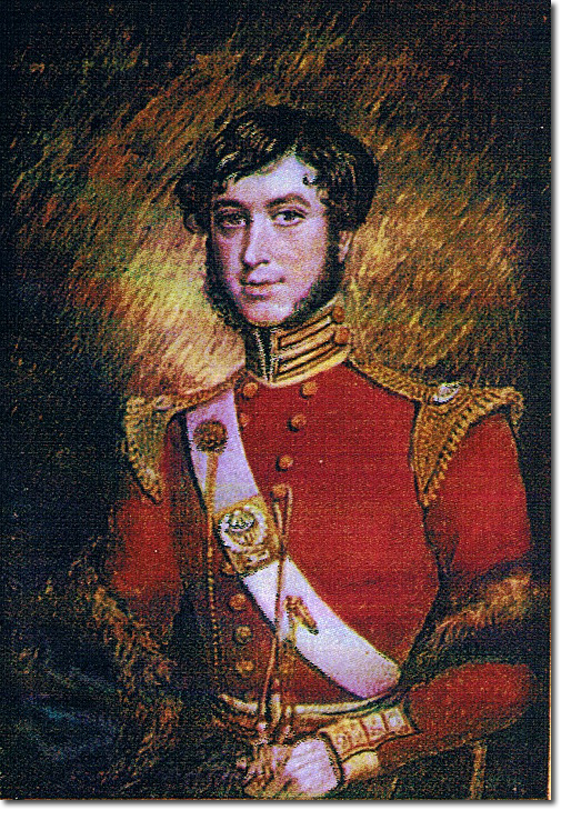|
|


|
|
In 1830 officers of the 13th were ordered to have gold lace, buttons and shoulder ornaments in line with the other regular infantry regiments. The coatee was changed to dispense with the wide lapels on the front. It was a double breasted garment with two rows of gilt buttons down the front. The collar and cuffs continued to have the yellow facing colour but the front of the collar was covered with two loops of gold lace and gilt buttons. The 13th had the distinction of a black line in these loops, a practice that began in 1823. The plain yellow cuff had a red slashed flap with four buttons and loops in gold. On the shoulders gold chain wings were worn, with a silver bugle badge. The bullion fringe on the edge was larger for captains than for subalterns. Field officers wore epaulettes.
The shoulder-belt is the most distinctive part of the uniform. The belt plate in the middle is a gilt rectangle with a silver wreath that has a bugle and XIII inside, and the Sphinx beneath. The gold whistle and chain are fixed to the belt either side of the belt-plate. The red cord looped over the fourth button comes from the crimson waist sash. The headgear with this uniform was the black beaver bell-topped shako which had black leather around the top and bottom, having no silver lace as was worn before 1830. The front had a star badge and a green silk ball on top. In undress the peaked forage cap was of dark green cloth with a black silk oak-leaf band. |
Armed Forces | Art and Culture | Articles | Biographies | Colonies | Discussion | Glossary | Home | Library | Links | Map Room | Sources and Media | Science and Technology | Search | Student Zone | Timelines | TV & Film | Wargames